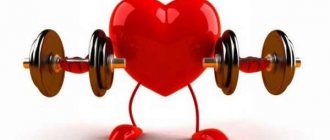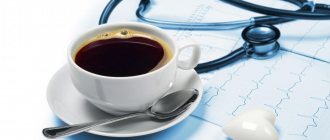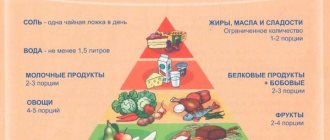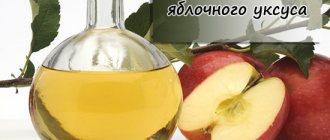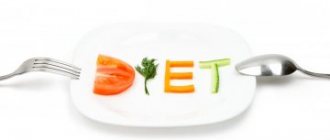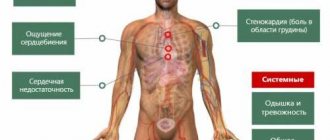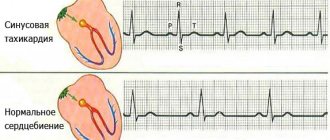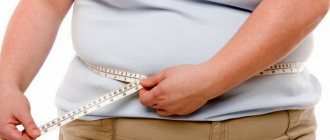General characteristics of tachycardia
Its most harmless type is sinus tachycardia. With this type, the heart contracts normally, the complexes on the ECG have the usual configuration, only their frequency is slightly higher than normal values.
This is exactly the kind of tachycardia that normally develops in people in response to any stress. It also appears in various diseases as a natural reaction of the body to an internal stimulus. However, it can also occur in some heart diseases.
More unpleasant is supraventricular tachycardia, which is always pathological. It can cause discomfort in patients and lead to the development of circulatory failure. Its occurrence in most cases is associated with the presence of heart disease.
The worst option is ventricular tachycardia. It is the most difficult to tolerate and, in addition, is very dangerous in terms of the development of ventricular fibrillation and sudden cardiac arrest. Therefore, when such attacks develop, immediate medical attention is required.
In general, any type of tachycardia may be accompanied by symptoms such as:
- Heartbeat;
- Dyspnea;
- Weakness;
- Dizziness.
They can be minor and quickly disappear or very significant and persistent. At the same time, their severity depends on the type of arrhythmia and the individual characteristics of the person himself.
Different people can tolerate symptoms of the same intensity in different ways, it’s all a matter of perception.
What is tachycardia - Symptoms and causes of tachycardia - Nutrition for tachycardia
Let's consider what tachycardia disease is - physiological and pathological, supraventricular and ventricular. What are the causes of tachycardia. 1. If, in addition to attacks, there is a slight trembling of the fingers on outstretched arms, then the cause may be a large number of medications used or their incorrect choice 2. If weight loss occurs, then the cause is excessive use of hormonal drugs and appetite suppressants. 3. If the attack is accompanied by profuse sweating, then the cause is excessive caffeine consumption. 4. If, along with tachycardia, there is strong nervous excitability, then the reason may be smoking, physical inactivity, or, conversely, excessive physical exertion. The causes of tachycardia are psychological stress, alcohol, lack of sleep, and overwork.
Basics of nutrition for tachycardia
There is a common belief that heart palpitations may be closely related to our diet. There are foods that contribute to the development of tachycardia, as well as those that, on the contrary, are useful to consume in terms of its prevention.
In fact, nutrition during cardiac tachycardia plays a rather modest role. The list of foods that cause an increase in heart rate is very modest. In addition, tachycardia that develops against the background of their use is physiological.
At the same time, the pathological increase in heart rate in most cases is based on heart disease, and it is the very fact of their presence that is of decisive importance for the development of tachycardia. At the same time, it appears suddenly, for no apparent reason.
To provoke an attack, it is not at all necessary to have any errors in the diet. Therefore, nutrition for arrhythmia and tachycardia should be aimed, first of all, at preventing the development and progression of cardiovascular diseases in general. This approach to the menu should be considered the most rational.
In this case, the diet implies a slight reduction in the total calorie content of food due to carbohydrates and animal fats, as well as limiting the use of table salt and substances that have a stimulating effect on the nervous system, which is especially important in terms of tachycardia.
The daily energy value of food should be approximately 2500-2600 kcal. The diet should contain:
- Proteins – 90 g (of which – 60% animal origin);
- Fats - 70 g (of which at least 30% are of vegetable origin);
- Carbohydrates - 400 g.
A menu that meets these requirements creates the most favorable conditions for the functioning of the circulatory system.
Useful and necessary
The diet includes steamed food. A double boiler or multicooker will help with tachycardia. You can simply boil or bake in the oven. The diet should contain no more than:
- 50 g fat.
- 1 egg (soft-boiled, fried, steam omelet).
Brown seaweed helps with attacks of tachycardia. They are added to sauces, dressings, salads, planned according to the diet. Young shoots of carrot and beet tops in salad or soup are healing. Turnips, celery, eggplants, and carrots are good. Fruits and berries: cherries, apricots or peaches, figs, cranberries - something that will keep the patient’s weakened body in good shape.
Vegetable oil - 15 ml - preferably corn or flaxseed - is also necessary for tachycardia.
The diet requires drinking plenty of fluids, but only on the recommendation of specialists.
What foods can you eat if you have tachycardia?
The diet for cardiac tachycardia should be enriched with proteins of animal origin. For this purpose, it is good to include lean varieties of meat and fish in the diet:
- Chicken;
- Turkey;
- A rabbit;
- Pike perch;
- Perch;
- Roach and others.
As for red meat, it is quite acceptable to eat lean beef or pork.
The menu must include milk and fermented milk products, which are easier to digest. They are rich in protein and calcium and at the same time have a moderate calorie content.
Cereals and wholemeal bread should be used as the main sources of carbohydrates. Such foods are digested more slowly than those that contain large quantities of simple sugars. Therefore, they have a more beneficial effect on the digestive system and at the same time have lower calorie content.
In addition, the diet for tachycardia in particular and for cardiac diseases in general involves eating large amounts of vegetables and fruits. If you eat enough of them daily, you can reduce the risk of cardiovascular disease by almost a third.
What is contraindicated
Sugar, sweets, salt and those containing animal fats should be reduced or eliminated from the diet altogether. And:
1. The important thing is that you should not overeat. This will make the heart work harder, leading to an attack. Calorie calculations for a day are supposed to be done in such a way that 2.5 to 3 thousand calories are consumed. Fortified food enriched with microelements increases the body's performance and strengthens the myocardium.
2. If you have tachycardia, it is not recommended to eat before bedtime and exclude it from your diet.
The presence of tachycardia requires complete abstinence from the following foods:
- Pickled products.
- Canned food.
- Pickles.
- Smoked.
- Fats, especially refractory ones.
- Fatty sauces, varieties of meat and fish, sour cream.
- Spices, spicy dishes.
- Fatty pastry cream desserts.
Particularly dangerous
You should absolutely not use:
- Food containing soda: biscuits, bread, gas water, drinks. Sodium is bad for the heart.
- Hard boiled eggs.
- Fried food.
- Alcohol-containing drinks and energy drinks.
- Drinks containing caffeine.
Exception for hypotensive patients
If tachycardia occurs against a background of low pressure, then diet restrictions are adjusted:
- You can add salt in moderation, season with cumin, basil, pepper, bay leaf.
- Baking from premium flour is allowed.
- Moderate consumption of wine (red type), cocoa, tea, even coffee is recommended.
- Butter, fatty fish, cream, cheese - would be appropriate here.
All this allows you to narrow the blood vessels, binding the liquid content, increasing the functioning of the endocrine glands. As a result, normal pressure is restored without stress on the myocardium.
What fruits and vegetables are good for tachycardia?
People suffering from arrhythmias, including those accompanied by rapid heartbeat, can be recommended to eat almost any vegetables and fruits in large quantities. They are a valuable source of vitamins, minerals and antioxidants, and are therefore very beneficial for the heart and blood vessels.
However, it should be remembered that some fruits and berries are high in sugar and have high calorie content. This:
- Bananas;
- Grape;
- Pomegranate;
- Cherries and sweet cherries;
- Khurma et al.
It is best to include them in your diet in small portions.
Also, you should not “overuse” too exotic fruits. They can cause a severe allergic reaction, which is unnecessary stress for the body. The optimal choice is vegetables and fruits grown directly in the area in which a person lives.
It is believed that nutrition for tachycardia must necessarily include plant foods high in potassium and magnesium:
- Legumes;
- Sea kale;
- Nuts;
- Greenery;
- Beetroot;
- Avocado, etc.
In most cases this is the correct approach. Tachycardia can sometimes develop solely due to a deficiency of these microelements. But it’s better not to start using them “blindly”, but first do an analysis and determine their initial content in the blood.
If it is closer to the lower limit of normal, then vegetables and fruits rich in potassium and magnesium will be very useful. If the indicator is below the threshold values, then it is better to supplement such a diet with potassium and magnesium supplements.
However, there are situations when potassium and magnesium are at the upper limits of the norm and even exceed it. Then such nutrition will be not only useless, but also dangerous.
In general, we can advise you not to “lean” on strictly defined vegetables and fruits, but to adhere to the principle of variety. This approach will definitely not harm the body, and this, as a rule, is quite enough to get the required amount of all useful substances.
Mineralization
Potassium deficiency in the human body can provoke heart contraction failures. And even more so when a person already has heart disease.
Products containing potassium
The diet should contain fresh blackcurrants or in drinks; bananas are useful for tachycardia. In winter - dishes with dried fruits such as raisins, dried apricots and prunes. Instead of sugar you need to take honey. Sunflower seeds are rich in potassium and vitamin E. Even the usual food potatoes, cabbage of any kind, parsley, buckwheat are rich in vitamins and minerals.
Magnesium food reserves
When choosing nutrition for tachycardia, it is worth adding magnesium. Rye bran, yeast, and avocado salads are suitable for the diet. Magnesium is found in cucumbers, spinach, legumes of any kind, alfalfa shoots, and in varieties of nuts and seeds.
What not to eat
Nutrition for tachycardia, first of all, involves limiting foods rich in caffeine.
First of all, these are well-known drinks:
- Coffee;
- Black and green tea;
- "Energy"
- Cola.
A few words should be said separately about green tea. Many, on the contrary, advise drinking it for heart disease, citing the fact that it sometimes helps with high blood pressure. However, this drink contains almost as much caffeine as green tea, which means it can also increase your heart rate.
There is also a fairly large amount of caffeine in chocolate, especially dark chocolate with a high percentage of cocoa. Therefore, you can eat it little by little, literally a few slices a day.
In addition, it is necessary to limit foods that can have a stimulating effect on the nervous system. This is spicy food cooked with a lot of spices, as well as various canned foods and marinades. Of course, their use does not pose a serious danger, but it may slightly increase the heart rate, which is undesirable.
In addition, you need to minimize foods that are generally harmful to the heart and blood vessels. First of all, these are fatty foods rich in cholesterol:
- Fat meat;
- Fatty broths;
- Salo;
- Sausages;
- Smoked meats;
- By-products, etc.
You should not overuse flour and sweet foods.
Such food contributes to the appearance of obesity and increased stress on the heart and blood vessels, the formation of atherosclerotic plaques and the development of coronary heart disease. Its consumption in large quantities is not recommended even for healthy people, not to mention those who already have heart problems.
Interestingly, foods rich in coarse plant fiber are also undesirable for tachycardia. They are poorly digested, and if you eat too much of them, it will put an excessive burden on the intestines, and instead of the expected benefit, you can get the opposite effect, including an increase in heart rate. Everything is good in moderation.
Foods that are healthy and cause seizures
To minimize the risk of developing tachycardia attacks after eating, you should include foods containing magnesium, iron and potassium in your diet. These products include:
- raisin;
- black currant;
- almond;
- cherries;
- celery root;
- bananas;
- dates;
- pineapples;
- cabbage;
- celery.
It is recommended to consume honey, as this product activates blood circulation and dilates blood vessels. To strengthen the heart muscle, your daily diet should include herbal tea and rosehip decoction.
Vegetables can be eaten either with cheese or baked. Vegetable salads contain a large amount of vitamins and nutrients, with a small amount of calories.
Among fermented milk products, it is recommended to consume low-fat cottage cheese, kefir, sour cream and yogurt. Low-fat varieties of pork, chicken and veal will benefit. Sauces should be spicy. Sunflower, flaxseed and corn oils should be used as salad dressings.
The following products should be avoided:
- salty food;
- eggs;
- fatty sauces;
- smoked meats;
- carbonated drinks;
- strong tea.
Alcoholic drinks, coffee and energy drinks have a negative impact on the cardiovascular system. Mushrooms are prohibited, as they are a very heavy product. Smoked meats negatively affect the functioning of the liver and pancreas. Foods high in cholesterol are dangerous for the body, as it settles in the heart muscle, thereby overloading it.
Drinking diet
Water is an important component of nutrition. It is needed for the normal course of all metabolic processes. Therefore, it is necessary that it enters the body in sufficient quantities. However, its excess can increase the volume of circulating blood and increase the load on the heart and blood vessels.
Before moving on to discussing the question of exactly how much water patients with tachycardia need to drink, first you need to decide how to calculate this very volume. The problem is that it is now very popular to consider only pure water, and to recognize the water that is contained in food or, for example, in tea as “inferior”.
In fact, our body does not care at all what kind of water it receives. During the digestion process, any food is broken down into simple components, among which will be that same “pure” water. Therefore, any drinks, soups, fruits - everything that contains water in one form or another should be considered.
Tachycardia as such is not an indication for limiting water intake. Therefore, you can drink it as usual: approximately 2-2.5 liters per day.
If chronic heart failure develops against the background of rapid heartbeat, the amount of fluid should be reduced to 1.5 liters per day.
Some recommend replacing plain water with decoctions and infusions of soothing herbs:
- Valerian;
- Mint;
- Melissa;
- Chamomiles, etc.
This may be useful for people whose attacks of tachycardia are associated with an unstable mental state and are often observed under the slightest stress. If the rapid heartbeat is due to other reasons, then the use of these folk recipes does not make much sense.
In any case, it is better to drink what you like best and not torment yourself with specially “healthy” decoctions.
The essence and rules of the diet
In case of tachycardia, it is necessary to adhere to a diet on a regular basis, the essence of which is to choose foods primarily with a vitamin-mineral composition and low calorie content. So, the diet will be dairy-vegetable with a minimum content of harmful fats.
The diet requires compliance with the following rules:
- daily calorie content is 2500-3000 kcal, and you can consume 1500-2000 kcal if you have problems with excess weight, which is a burden on the heart and aggravates attacks of tachycardia;
- eat regularly - 4-5 times a day, following the rules of separate meals, so as not to overeat and not provoke a heart attack;
- arrange your last meal 2-3 hours before going to bed;
- cook food by steaming, boiling, boiling or baking in the oven, while the use of a double boiler and multicooker is only encouraged;
- do not use salt in cooking, and already cooked food can be lightly salted.
Choosing the right products and following the listed rules will strengthen the walls of the heart muscle and saturate the organ with all the components necessary for its normal functioning.
Sample menu for the week
Based on the above principles, let's try to imagine what an approximate menu for one week might look like.
Monday. Breakfast:
- Oatmeal with milk or water with the addition of dried fruits
- A glass of freshly squeezed apple juice
Afternoon snack:
- Low-fat yogurt
- Peach
Dinner:
- Vegetable soup
- Black bread
- Boiled chicken
- Wholemeal pasta
Dinner:
- Boiled fish
- Bean side dish
- Salad of greens, cucumbers and tomatoes
- Orange
Tuesday. Breakfast:
- Buckwheat
- Dried fruits compote
Afternoon snack:
- Banana
Dinner:
- Chicken soup
- Baked fish with vegetables
- Boiled potatoes
- Black bread
Dinner:
- Steamed lean pork cutlets
- Rice
- Steamed broccoli
- Apple
Wednesday. Breakfast:
- Cottage cheese casserole
- Weak tea
- Afternoon snack
- Nuts
- Pear
Dinner:
- Cabbage soup
- Black bread
- Spaghetti with vegetables
Dinner:
- Boiled rabbit meat
- Buckwheat
- Vegetables
- Fruit salad
Thursday. Breakfast:
- Scrambled eggs with vegetables
- A glass of freshly squeezed orange juice
Afternoon snack
- Crackers with cheese
- Apple
Dinner:
- Pumpkin cream soup
- Black bread
- Boiled chicken
- Mashed potatoes
Dinner:
- Lean boiled veal
- Rice
- The vinaigrette
- Orange
Friday. Breakfast:
- Millet porridge with dried fruits
- Glass of carrot juice
Afternoon snack:
- Boiled egg
- Berries
Dinner:
- Rice soup
- Black bread
- Baked fish with vegetables
Dinner:
- Homemade noodles with sour cream and champignon sauce
- A glass of kefir
Saturday. Breakfast:
- Syrniki
- Fruit salad
- A glass of freshly squeezed apple juice
Afternoon snack:
- Vegetable Salad
Dinner:
- Borsch
- Black bread
- Chicken baked with rice and vegetables
Dinner:
- Boiled lean pork
- Lentil porridge
- Orange
Sunday. Breakfast:
- Porridge with milk or water with the addition of dried fruits
- A glass of freshly squeezed apple juice
Afternoon snack:
- Banana
Dinner:
- Fish soup
- Black bread
- Buckwheat
- Steamed meatballs
Dinner:
- Pilaf
- Vegetable salad
- Apple
Of course, this menu is very conditional, and it is only approximate. The main thing here is to understand the principle: the diet should be as varied and balanced as possible.
Additionally, ideally, you should count your protein, fat, carbohydrates, and calories every day.
Grocery list
Cardiac tachycardia has many causes. These are pathologies of the heart and blood vessels, physical and psychological overload, anemia, problems with the thyroid gland, chronic infections, bad habits, including smoking and poor diet.
- All information on the site is for informational purposes only and is NOT a guide to action!
- can give you an ACCURATE DIAGNOSIS !
- We kindly ask you NOT to self-medicate, but to make an appointment with a specialist !
- Health to you and your loved ones!
With tachycardia, it is necessary to use the maximum number of ways to reduce the load on the heart. And diet plays the first role here after medications.
Nutrition for cardiac tachycardia includes healthy and prohibited foods, food intake, food preparation rules, drinking regime:
- dried fruits with a high content of potassium, magnesium and iron (dried apricots, raisins, dates, figs);
- fresh fruits and berries with a similar composition (cherry, grapefruit, apricot, black currant, peach, banana, pineapple);
- vegetables and herbs (cabbage, celery, parsley, lettuce, beets, eggplant, Jerusalem artichoke);
- honey;
- nuts (almonds, hazelnuts);
- cereals and bran;
- dried rose hips;
- herbal teas;
- lean meat (chicken, turkey, pork, veal);
- lean white fish;
- eggs (1 piece per day);
- fresh fruit drinks, compotes, juices from berries, vegetables and fruits;
- low-fat fermented milk products (yogurt, cottage cheese, kefir, sour cream);
- milk;
- flaxseed, corn and other vegetable oils in a volume of up to 15 ml per day.
It is preferable to consume vegetables, fruits and berries raw, but in the daily diet, fruit drinks, compotes, smoothies, puddings, and jellies are prepared from them to diversify the menu. Milk porridges and puddings are prepared from cereals. Boiled eggs are allowed, steamed omelettes are useful. Meat and fish are boiled, baked, cutlets and steamed meatballs are prepared.
The advantages of the recommended products lie in their rich vitamin and mineral composition, low calorie content, minimal content of harmful fats, and the ability to enrich the heart muscle with the components it needs. This is also useful for obesity, which often provokes problems in the functioning of the heart and blood vessels.
- in the first place is alcohol, as a provocateur of arrhythmia and tachycardia with a load on blood vessels and an increase in blood pressure;
- caffeine and products containing it (Coca-Cola, energy drinks, coffee, tea);
- soda, salt, spices;
- fried or hard-boiled eggs;
- fatty fermented milk products (sour cream, cream);
- marinades, canned food, spicy dishes;
- any spicy and fatty sauces;
- smoked meats
Observations of doctors and experience of patients show that minimal consumption or complete exclusion of prohibited foods from the diet helps prevent attacks of tachycardia. This list can be supplemented with confectionery, sweets and carbonated drinks.
If your blood pressure is low, this list can be adjusted. Salt, spices (cumin, pepper, basil, bay leaf), confectionery products made from premium flour are allowed. Coffee and natural red wine, tea and cocoa are shown.
Hypotonic patients are not prohibited from eating fatty fish, butter, cheese, and cream. These products bind fluid in the body, constrict blood vessels, increase the activity of the endocrine glands, which helps increase blood pressure without putting much strain on the heart.
A completely filled stomach can irritate the nerve receptors responsible for the functioning of the heart and provoke an attack of tachycardia, so overeating is unacceptable
Fasting days for tachycardia
For people suffering from tachycardia, fasting days are not recommended. This is too harsh a measure and serious stress for the body, against the background of which another attack may develop.
If you are overweight, it is best to organize your diet in such a way that the calorie deficit is daily, but small. This will allow you to get rid of excess fat without harm to the nervous and cardiovascular systems.
If, however, you prefer fasting days, then you first need to consult with a cardiologist and nutritionist. Doctors will evaluate possible indications and contraindications and advise on how best to organize nutrition. However, in any case, it will not be fasting, but a more gentle regime.
Sample menu
The patient's menu depends on age, gender, weight, lifestyle and the clinical picture of the disease. A nutritionist or attending physician will help you create it. It should be balanced, nutritious, rich in vitamins and minerals, but not overload the cardiovascular system. Below is a table with recommended meals for an adult with tachycardia.
Here are breakfast, lunch and dinner options to avoid heart palpitations. In this case, you can include freshly squeezed juices, herbal teas and rosehip tinctures. The last meal should be three hours before bedtime. The body should not be overloaded with food, so portions are the size of a fist. There are many dietary options online for tachycardia that will not be boring.
Causes
The simplest reason for increased heart rate after eating is overeating. As a result, increased pressure is placed on the diaphragm. The cause of the deviation may be the consumption of flour, as well as fatty and fried foods. This condition goes away on its own after some time.
Why does shortness of breath begin after eating?
There are a large number of factors that can cause shortness of breath.
Common reasons:
- anemia;
- bronchitis;
- arrhythmia;
- excess weight;
- stomach ulcer;
- poor nutrition;
- irritable bowel syndrome;
- history of myocardial infarction;
- pathologies of the thyroid gland;
- disruption of the nervous system;
- undergone gastric resection surgery;
- chronic ischemia and vegetative-vascular dystonia.
Sometimes tachycardia occurs while taking medications. In this case, it is necessary to determine which one and exclude it from the therapeutic regimen. Often this deviation occurs after the end of the course of treatment.
Shortness of breath may be caused by an allergic reaction to a certain product. If a dangerous allergen is identified, then not only it, but other related products should be excluded from the diet.
Treatment of tachycardia: decoctions
Any herbal decoctions with a calming effect are useful: motherwort, mint and lemon balm, hawthorn and valerian.
It is known that herbal medicine gives a slow effect - you will have to drink the compositions for at least 2 months for the healing effect to appear. Some herbs cannot be combined with medications; it is advisable to discuss their use with your doctor. It is recommended to carefully study the instructions for medications to ensure that they are not incompatible with medicinal plants.
Hawthorn is successfully used in the treatment of heart diseases. How is it used?
Decoction. A tablespoon of raw material is brewed in a glass of boiling water. Drink on an empty stomach in 3 doses.
Hawthorn collection. Mix the flowers of the plant with lovage, chicory, calendula and motherwort - a spoonful of each raw material. Pour a liter of boiling water over the plants. The entire mixture is prepared in a water bath for a quarter of an hour. They drink little by little, 2 tablespoons, but often – up to 7 times a day.
Alcohol tincture. A ready-made alcohol tincture of the plant at the rate of 12 drops/3 doses per day brings the pulse rate back to normal.
Mixed alcohol tincture. Take ready-made alcohol tinctures from hawthorn, motherwort, valerian and mix. The alcohol mixture is drunk at the rate of 15 drops/3 doses. Use the product on an empty stomach.
Valerian and motherwort
These plants will help you calm down and get a good night's sleep, which is part of the treatment of tachycardia.
Valerian decoction. The root of the plant is mixed with calendula flowers. 2 tablespoons of the mixture are infused in boiling water (1.5 cups). Drink the composition at the rate of 1/3 cup/6 times for 2 weeks. The course is repeated after a week break.
Motherwort decoction. Take for a restful sleep in the evening. Brew 2 tablespoons of the plant with a glass of boiling water, add 3 drops of mint oil and honey.
What vitamins does the heart need?
There are a huge number of different vitamins, but only some of them have the ability to have a beneficial effect on the condition of the heart. The most important are the following:
- Vitamin B (thiamine). Tones the heart, helps strengthen vascular walls, normalizes heartbeat.
- Vitamin P (rutin). Increases the elasticity and thickness of the walls of blood vessels, reduces their fragility.
- Vitamin C (ascorbic acid). Helps cleanse blood streams, dissolve formed plaques, and reduces the level of “bad” cholesterol.
- Vitamin B6 (pyridoxine). Responsible for restoring metabolic processes, removing excess cholesterol from the body and strengthening myocardial fibers.
- Vitamin E (tocopherol). It is an antioxidant and prolongs the youth of heart cells.
- Vitamin F. Prevents the formation of blood clots, improving vascular patency.
- Coenzyme Q10 (coenzyme). Responsible for protecting heart cells from premature wear.
Vitamins for the heart for tachycardia can be purchased at any pharmacy chain. They are offered both in tablet form and as injections.
Table: list of vitamins and their effects
| Group of vitamins | How do they affect the functioning of the heart? |
| Group B | They are directly involved in many metabolic processes. They are responsible for the tone of the heart and the vascular system as a whole, and regulate the functioning of the central nervous system. The deficiency is expressed in the development of anemic conditions, the occurrence of arrhythmias, hypertension, and neurological disorders. |
| Group F (Omega-3 and Omega-6 polyunsaturated fatty acids) | Participate in the formation of cell membranes and support cholesterol metabolism. They play an important role in maintaining the structure of the walls of blood vessels. Deficiency is expressed in increased fragility of blood vessels and the formation of small hemorrhages. |
| Vitamins A, E, C | They influence the rejuvenation of the entire body as a whole, maintain the natural level of vascular elasticity, and prevent the formation of cholesterol plaques. |
| Coenzyme Q10 | Coenzyme Q10 is a participant in almost all biochemical processes. Responsible for normal myocardial contraction. Natural antioxidant. |
Will direct
The vitamin complex includes:
- B vitamins,
- magnesium,
- potassium,
- gingo biloba extract,
- hawthorn extract.
While taking the drug, there is a decrease in blood pressure and cholesterol levels. Vitamins prevent the development of a heart attack by improving the condition of blood vessels and expanding their lumen.
"Cardio Forte"
The composition of the combined vitamin preparation includes valerian extract, cinnamon and beta-carotene. They help normalize the functioning of the heart muscle and eliminate manifestations of vegetative-vascular dystonia.
The complex can be used as a therapeutic and preventive measure. Recommended for recovery after surgery.
"Cardioactive Hawthorn Forte"
The drug is a food supplement based on the flowers and fruits of hawthorn. Additional components are magnesium and potassium aspartate.
Thanks to this combination, the dietary supplement helps normalize blood pressure and heart rate, has a protective effect on blood vessels and relieves spasms.
"CardioHealth"
"CardioHealth" is a combined remedy. Taking the tablets helps accelerate slowed metabolic processes, normalizes cholesterol levels, and improves the elasticity of blood vessels. In addition, it helps restore the functioning of the central nervous system and strengthens the immune system.
"Panangin"
The composition of the drug is represented by a potassium-magnesium complex, due to which it is successfully used in the treatment of arrhythmias.
Products for the heart
Nutritionists have compiled a list of foods that can strengthen and protect the heart muscle. These are recognized as:
- Drink made from red grapes. Slows down the process of blood clot formation.
- Vegetable oils, beans, cheeses, cottage cheese. Contains a lot of vitamin E.
- Natural milk. Reduces the likelihood of developing heart disease.
- Walnut. Reduces cholesterol levels.
- Fish. Minimizes the likelihood of myocardial rupture.
These products must be included in the diet for any cardiac pathology, and not just when diagnosing tachycardia.
Vitamins and diet will not be able to completely cure the disease, but will significantly reduce the number of attacks of tachycardia.
